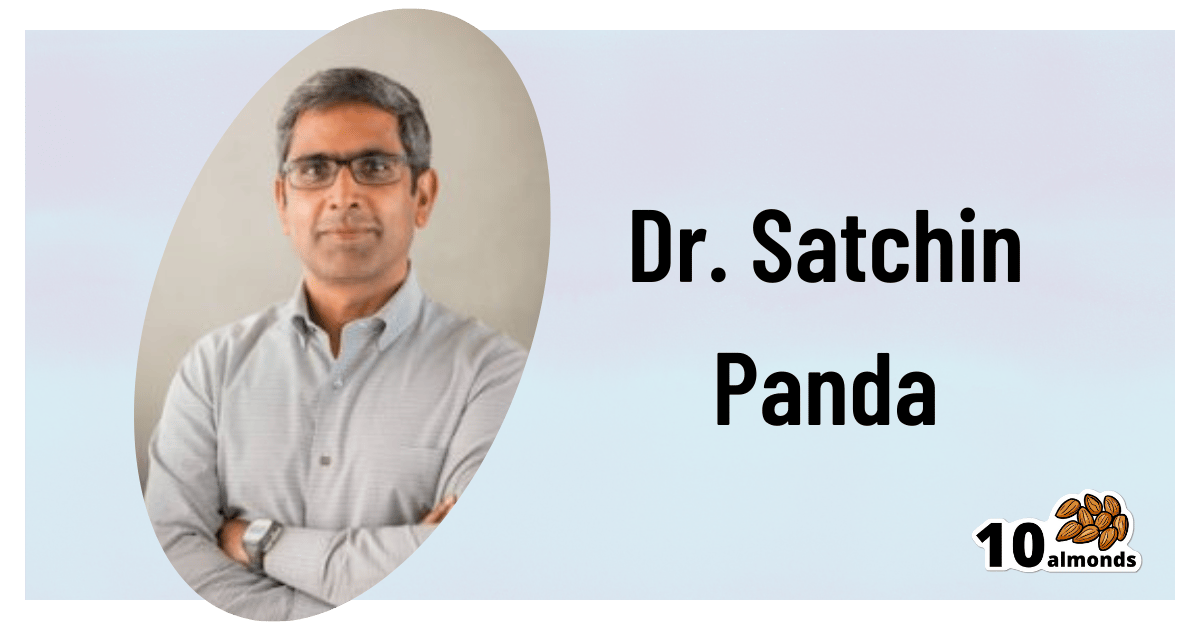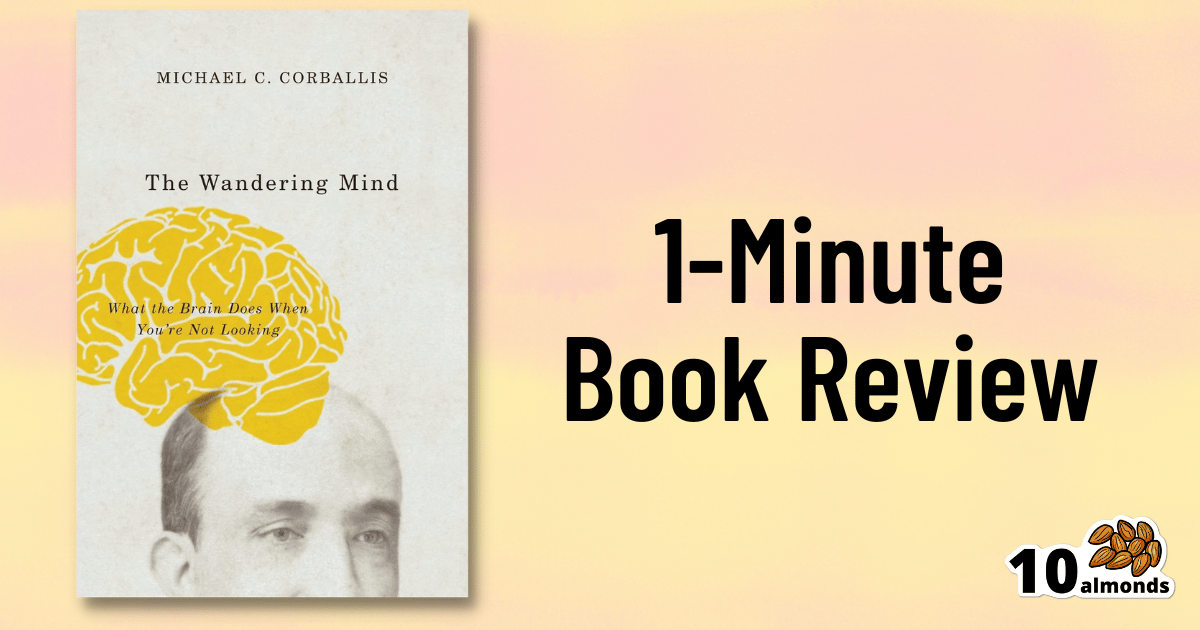
Today’s almonds have been activated by:
Loading Screen Tip: are you taking any oral medications? If so, think twice before enjoying seasonal foods and drinks made with activated charcoal (characterized by their pitch-black look).
Activated charcoal is famously great at removing many toxins from the body, and/but it neither knows nor cares what a toxin is, and will remove many of your medications too.
Medications it will generally remove include many oral: antidepressants, antipsychotics, antiretrovirals, hormones (including birth control), and assorted heart medications.

⏰ IN A RUSH?
Today’s 30-Second Summary
If you don’t have time to read the whole email today, here are some key takeaways:
Our circadian rhythm is about far more than just waking/sleeping
It’s also informed by far more than just light/dark
Today’s featured expert, Dr. Satchin Panda, takes us deeper into our body’s natural rhythm, including:
What light/dark does for us, and how it’s important, but not completely necessary
How our body knows what time it is even in perpetual darkness
The many peaks and troughs of many physiological functions over the course of a day/night
What that means for us in terms of such things as diet and exercise
Practical take-aways from the above
Processed foods have less fiber, and food with the fiber stripped tends to have less taste too. Nuts are no different!
Today’s sponsor, Karma, are offering cashews like you (probably) haven’t had them before. An already delicious and nutritious snack, now scrumptiously seasoned (or plain!) but without their fiber being stripped.
Read on to learn about these things and more…

👀 WATCH AND LEARN
Isometric Horse Stance To Deep Squat Flexibility
Physiotherapist Daniel Vadnal offers a step-by-step guide in this short (4:59) video:

🕑 MAIN FEATURE
The Circadian Rhythm: Far More Than Most People Know
This is Dr. Satchidananda (Satchin) Panda, the scientist behind the discovery of the blue-light sensing cell type in the retina, and the many things it affects. But, he’s discovered more…
First, what you probably know (with a little more science)
Dr. Panda discovered that melanopsin, a photopigment, is “the primary candidate for photoreceptor-mediated entrainment”.
To put that in lay terms, it’s the brain’s go-to for knowing approximately what time of day or night it is, according to how much light there is (or isn’t), and how long it has (or hasn’t) been there.
But… the brain’s “go-to” isn’t the only method. By creating mice without melanopsin, he was able to find that they still keep a circadian rhythm, even in complete darkness:
In other words, it was a helpful, but not completely necessary, means of keeping a circadian rhythm.
So… What else is going on?
Dr. Panda and his team did a lot of science that is well beyond the scope of this main feature, but to give you an idea:
With jargon: it explored the mechanisms and transcription translation negative feedback loops that regulate chronobiological processes, such as a histone lysine demathlyase 1a (JARID1a) that enhances Clock-Bmal1 transcription, and then used assorted genomic techniques to develop a model for how JARID1a works to moderate the level of Per transcription by regulating the transition between its repression and activation, and discovered that this heavily centered on hepatic gluconeogenesis and glucose homeostasis, facilitated by the protein cryptochrome regulating the fasting signal that occurs when glucagon binds to a G-protein coupled receptor, triggering CREB activation.
Without jargon: a special protein tells our body how to respond to eating/fasting at different times of day—and conversely, certain physiological responses triggered by eating/fasting help us know what time of day it is.
Simplest: our body keeps on its best cycle if we eat at the same time every day
This is important, because our circadian rhythm matters for a lot more than sleeping/waking! Take hormones, for example:
Obvious hormones: testosterone and estrogen peak in the mornings around 9am, progesterone peaks between 10pm and 2am
Forgotten hormones: cortisol peaks in the morning around 8:30am, melatonin peaks between 10pm and 2am
More hormones: ghrelin (hunger hormone) peaks around 10am, leptin (satiety hormone) peaks 20 minutes after eating a certain amount of satiety-triggering food (protein does this most quickly), insulin is heavily tied to carbohydrate intake, but will still peak and trough according to when the body expects food.
What does this mean for us in practical terms?
For a start, it means that intermittent fasting can help guard against metabolic and related diseases (including inflammation, and thus also cancer, diabetes, arthritis, and more) a lot more if we practice it with our circadian rhythm in mind.
So that “8-hour window” for eating, that many intermittent fasting practitioners adhere to, is going to do much, much better if it’s 10am to 6pm, rather than, say, 4pm to midnight.
Additionally, Dr. Panda and his team found that a 12-hour eating window wasn’t sufficient to help significantly.
Some other take-aways:
For reasons beyond the scope of this article, it’s good to exercise a) early b) before eating, so getting in some exercise between 8.30am and 10am is ideal
It also means it’s beneficial to “front-load” eating, so a large breakfast at 10am, and smaller meals/snacks afterwards, is best.
It also means that getting sunlight (even if cloud-covered) around 8.30am helps guard against metabolic disorders a lot, since the light remains the body’s go-to way of knowing the time.
We realize that sunlight is not available at 8.30am at all latitudes at all times of year. Artificial is next-best.
It also means sexual desire will typically peak in men in the mornings (per testosterone) and women in the evenings (per progesterone), but this is just an interesting bit of trivia, and not so relevant to metabolic health
What to do next…
Want to stabilize your own circadian rhythm in the best way, and also help Dr. Panda with his research?
His team’s (free!) app, “My Circadian Clock”, can help you track and organize all of the body’s measurable-by-you circadian events, and, if you give permission, will contribute to what will be the largest-yet human study into the topics covered today, to refine the conclusions and learn more about what works best.

❤ OUR SPONSORS MAKE THIS PUBLICATION POSSIBLE
You probably haven’t had cashews like this before
Processed foods have less fiber, and food with the fiber stripped tends to have less taste too. Cashews are no different! But these ones are.
Karma Nuts is home of the “wrapped” cashew, which retains its natural skin for 2x the fiber, antioxidant activity comparable to blueberries (a famously top-tier source of such), and an amazing taste and crunch!
Their range of 11 varieties (plain, plus assorted seasoning variations) are all air-roasted with no added oil. They’re also gluten-free, vegan, kosher, and Non-GMO Project Verified, making them the perfect healthy snack for every occasion*
*this writer would like to humbly suggest they make a great appetizer snack to enjoy while cooking, which also means pre-loading with fiber, which is great for blood sugar health, and protein, which starts the feeling-of-fullness clock ticking and helps avoid overeating at dinner.
Please do visit our sponsors—they help keep 10almonds free

🌏 AROUND THE WEB
What’s happening in the health world…
Is a low-calorie diet the answer to Polycystic Ovary Syndrome (PCOS)?
Female surgeons sexually assaulted while operating
Rethinking menopause: experts call for individualized treatment and more research
New study disentangles a long-standing link between inflammation and cancer progression
Older people may have glaucoma without realizing it
Nine things you need to know about cancer surge among under-50s
More to come tomorrow!

📖 ONE-MINUTE BOOK REVIEW
The Wandering Mind: What the Brain Does When You're Not Looking – by Dr. Michael Corballis
Our mind's tendency to wander can be a disability, but could it also be a superpower? Dr. Corballis makes the case for such.
While many authors focus on, well, how to focus, Dr. Corballis argues in this book that our wandering imagination can be more effective at problem-solving and creative tasks, than a focused, blinkered mind.
The book's a quick read (184 pages of quite light reading), and yet still quite dense with content. He takes us on a tour of the brain, theory of mind, the Default Mode Network (where a lot of the brain's general ongoing organization occurs), learning, memory, forgetting, and creativity.
Furthermore, he cites (and explains) studies showing what kinds of "breaks" from mental work allow the wandering mind to do its thing at peak efficiency, and what kinds of breaks are counterproductive. Certainly this has practical applications for all of us!
Bottom line: if you'd like to be less frustrated by your mind's tendency to wander, this is a fine book to show how to leverage that trait to your benefit.

What did you think of today's newsletter?
Wishing you good health in all ways, always,
The 10almonds Team




